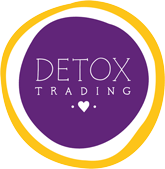Many people who seek out superfood suppliers are looking to ensure their diet is filled with every vitamin and mineral they need to thrive and survive.
In practice, whilst we often talk about particular superfoods being better than others, a healthy overall diet and a balanced pattern of eating is the most important pathway to amazing health and fitness.
However, it can sometimes be difficult to work out exactly how much of which fruits and vegetables you should be eating each day, and whether they should be augmented with multivitamins or extra ingredients.
One potential solution to this is to rely on a deceptively simple rule.
What Is The Rainbow Rule?
The rainbow rule, or eating the rainbow, is based around incorporating foods of a range of different colours based on the six main colours of the rainbow, with indigo and violet both being covered by purple foods.
Covering the spectrum of different food colours allows for a considerable number of superfoods to be incorporated into diets, as many superfoods tend to be brightly coloured.
Superfoods, an idea that dates back to 1917 although only gaining the name several decades later, are natural foods rich in nutrients, vitamins and antioxidants that have become highly desired.
The key to a diet such as this is variety, and following the rainbow rule does encourage a diverse level of fruit and vegetable intake higher than the five portion minimum that is recommended for a healthy diet.
To follow the diet, simply follow the diet from red to purple and choose at least one superfood. Try to pick diverse foods, such as an earthy vegetable from one colour and a sweet fruit from another.
Red
Red is a popular colour for bright superberries, such as strawberries, raspberries, cranberries, cherries and tomatoes. However, there are some other amazing superfoods included in the colours, such as red peppers, pomegranates, watermelon and radishes.
Orange
Besides the citrus fruit that bears its name, orange has a lot of options, including butternut squash, apricots, peaches, pumpkin, papaya, mango and sweet potato.
Many of the root vegetable parts of this colour, in particular, are often staple parts of a superfood diet.
Yellow
Yellow is home to the original energy and potassium filled superfood: the banana. Besides this, however, there are a lot of options for a diet, including lemons, pineapple, sweetcorn and squash.
Green
There are almost too many green superfoods to count, so you can afford to be picky when it comes to this vegetable.
Top on your priorities list should be spinach, a leafy green rich in iron. Outside of that, you have avocado, broccoli, cucumbers, celery, kiwi fruit and green pears.
Blue
At first glance, there does not appear to be a lot of choice with blue coloured foods, but that in part is because one of the best superfoods out there is the humble blueberry.
Filled with flavonoid antioxidants, blueberries are low in calories but rich in fibre, vitamin C and potassium, making them an ideal food to either snack on or add to a variety of dishes on a daily basis
Purple
There are several purple variations of other foods on this list, such as purple sprouting broccoli. However, purple is filled with some excellent nutritious ingredients in its own right.
From aubergine, purple grapes and plumbs, blackcurrants, purple cabbage and red onion (which whilst called “red” looks more purple), purple foods tend to add particularly flavourful accents to a diet.

